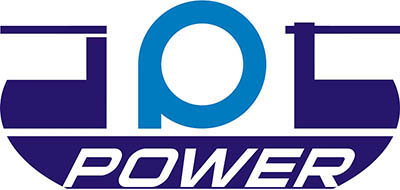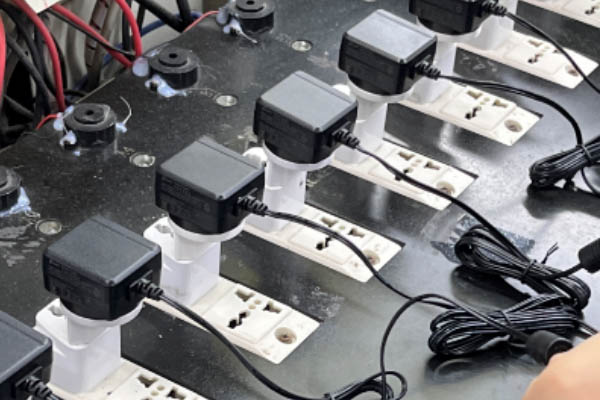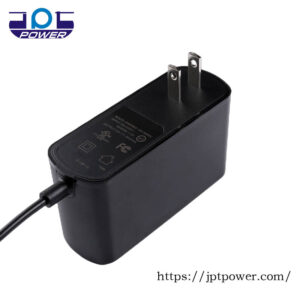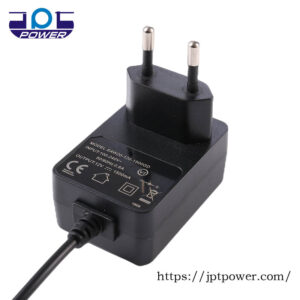Wall plug adapters input voltage specification
The working range of most low to medium power wall plug adapters for input voltage is 85~264 Vac, which is standardized worldwide. While there may be some differences in different countries and regions, they are similar enough that a single specification range can meet the needs of most applications. Users should verify the AC input voltage range of the power supply is compatible according to their target market and specified application requirements. Meanwhile, in industrial applications, there is a higher voltage specification of 277 Vac, which is achieved by connecting equipment configured for 480 Vac, and the maximum input voltage for this configuration is 305 Vac.
DC output voltage specification:
The output voltage of a wall plug adapter power supply includes common voltage levels such as 5, 12, 24, or 48 Vdc. If the system load is designed to use one of these common voltage levels, there will be more standard power supplies available to choose from. However, if the standard output voltage is not suitable for the system, other options may need to be considered, such as finding a standard power supply with the required DC output voltage, finding a power supply vendor willing to provide custom-designed power supplies with the required output voltage, or using a DC-DC converter to generate the required DC voltage. Therefore, in addition to the output voltage, the input voltage range, load requirements, and other application-specific requirements must also be considered when selecting a wall plug adapter power supply.(Mains electricity by country)
Output power or load current:
When choosing an wall plug adapter power supply, output power or load current is a very important consideration. The peak power of the load determines the rated power required by the power supply. Rated power higher than the load requirement may make the power supply too large or too expensive, but it can operate normally. If the rated power is less than the load requirement, problems such as shutdown or incorrect output voltage may occur. Some wall plug adapter power supplies offered by suppliers are designed to provide high peak power for a short period of time, in order to minimize the size and cost of the power supply. In actual applications, factors such as stability, efficiency, and reliability must also be considered, and choices made according to application-specific requirements.
No. | output voltage | output current | Output power |
1 | 5 | 1A | 5W |
2 | 12 | 1A | 12W |
3 | 12 | 2A | 24W |
4 | 24 | 1A | 24W |
5 | 24 | 2A | 48W |
6 | 24 | 3A | 72W |
7 | 48 | 1A | 48W |
Common output voltage
Operating environment:
The operating environment of the power supply is one of the important factors that affects the selection of a wall plug adapter power supply. Most power supply specifications include derating factors for extreme hot and cold temperatures, with low-temperature power derating usually caused by the temperature coefficient of capacitors used in the power supply design. Therefore, when selecting a power supply, the temperature range of the desired operating environment needs to be considered. At the same time, at high environmental temperatures, the internal components of the power supply are also affected, which may limit the output power of the power supply. In addition to the temperature range of the operating environment, physical environmental characteristics (such as size, shape, material, etc.) may also affect the selection of the power supply. If physical protection of electronic equipment is required, measures such as using a metal casing or coating with a conformal coating can be considered to provide the required protection. Insulated terminal covers can also be used to prevent accidental connections and protect the power supply. In summary, the operating environment of the power supply and application-specific requirements are key factors to consider when selecting a WALL PLUG ADAPTER power supply.
Safety certification:
For many products, the WALL PLUG ADAPTERs used need to comply with relevant operational and safety certification regulations. Some common regulatory requirements include 61558, 60335 (household appliances), and 62368 (audio, video, and information and communication technology). Different regulations may have different requirements for the performance and safety aspects of the power supply. Therefore, the necessary certificates and regulatory bodies need to be considered when selecting a power supply. Power supply vendors will be able to provide copies of applicable certificates to the product development team or testing agencies that can grant the certificate to the final system. Common regulatory bodies include UL, TUV, IEC, EN, FCC, and CISPR. By obtaining the appropriate certificates, it can be ensured that the power supply meets the required safety and performance requirements, thus improving product reliability and quality.
Additional features of other power supplies:
Discrete output voltage levels (available in most power supplies).
Up to 10% output voltage regulation is provided to allow the user to adjust the output voltage according to specific requirements.
The output terminals on some power supplies can be connected in parallel to increase the maximum current supplied to the load.
Some high-current output power supplies have remote output voltage detection terminals to compensate for voltage drops along the output supply conductor.
Input power factor correction is usually available for high-power power supplies to improve energy utilization efficiency.
Remote on/off terminals will allow users to switch power supply outputs using electronic signals, while power good terminals will provide signals indicating that the output voltage is within the regulation tolerance range.
These additional features provide greater flexibility and control and help users select the appropriate power supply according to specific applications.
Conclusion:
Standard internal wall plug adapters provide multiple configurations to meet the needs of most design projects. However, due to the diversity of application, load and performance requirements, some adjustments or special configurations may be required to meet the needs of specific applications. Therefore, checking the website or talking to a representative from a power supply vendor to ensure they are choosing the best power supply for their product may be helpful. Experienced power supply companies, such as JPTPOWER, are willing to assist with the power supply selection process and offer more specialized solutions according to customer requirements. This can greatly simplify the work of design engineers, shorten the design cycle, and ensure the success of products in the market. JPTpower is a trustworthy manufacturer for power supplies.




